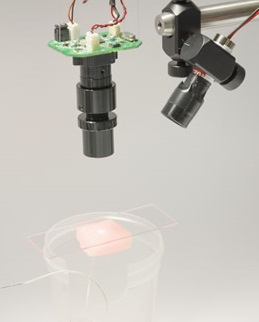Blood flow tracker for under a hundred
 A hospital-grade lightweight blood flow imager has been cobbled together for around a hundred dollars by some US scientists, and they say it works perfectly.
A hospital-grade lightweight blood flow imager has been cobbled together for around a hundred dollars by some US scientists, and they say it works perfectly.
Tracking blood flow is a fundamental part of assessing and diagnosing a range of conditions including migraines and strokes. Normally, expensive equipment such as laser speckle contrast imagers (LSCI) are used. Now using a few dollars worth of off-the-shelf commercial parts including a webcam and a laser pointer, researchers at the University of Texas at Austin (UT-Austin) have duplicated the performance of expensive, scientific-grade LSCI instruments at a fraction of the cost.
“We demonstrate that the high cost of standard systems is unnecessary, because a system that costs $90 can give equivalent results for both in vitro and in vivo imaging applications,” said biomedical engineer Andrew Dunn, an associate professor and Dornberger Centennial Fellow in Engineering at UT-Austin and an author of the study published in the latest edition of Biomedical Optics Express.
An average laser speckle contrast machine costs around $5000, but is made of surprisingly simple components - a laser light to illuminate the tissue, a camera to record the image, and focusing optics to direct the scattered light to the camera. In the UT-Austin team’s design a $5 laser pointer is used to illuminate the patch of tissue to be imaged. Light is reflected off the tissue and focused by a pair of generic 40mm camera lenses onto the sensor of a $35 webcam. The team used this setup to successfully identify areas of high flow versus low flow in the blood of a mouse.
“The lens configuration could be easily adjusted to visualize even smaller structures by magnifying or to visualize larger structures by increasing the field of view, depending on what kind of flow the user is interested in visualizing,” Dunn says.
The major limitation is the sensor on the webcam, but there are plenty of cost-effective high-definition alternative sensors on the market.








 Print
Print